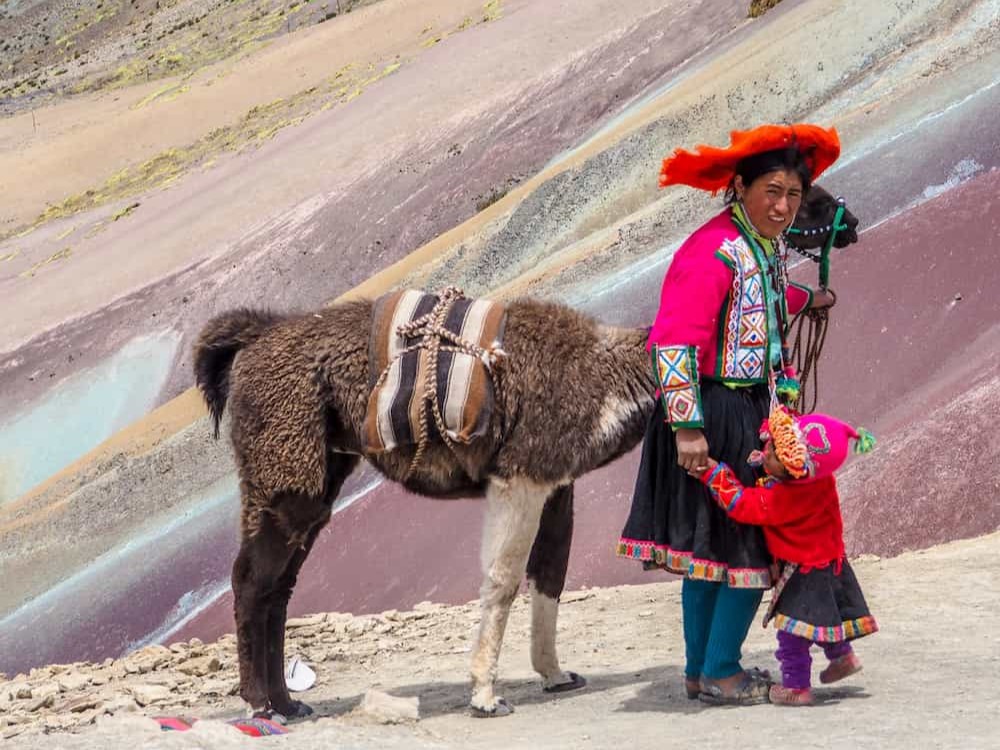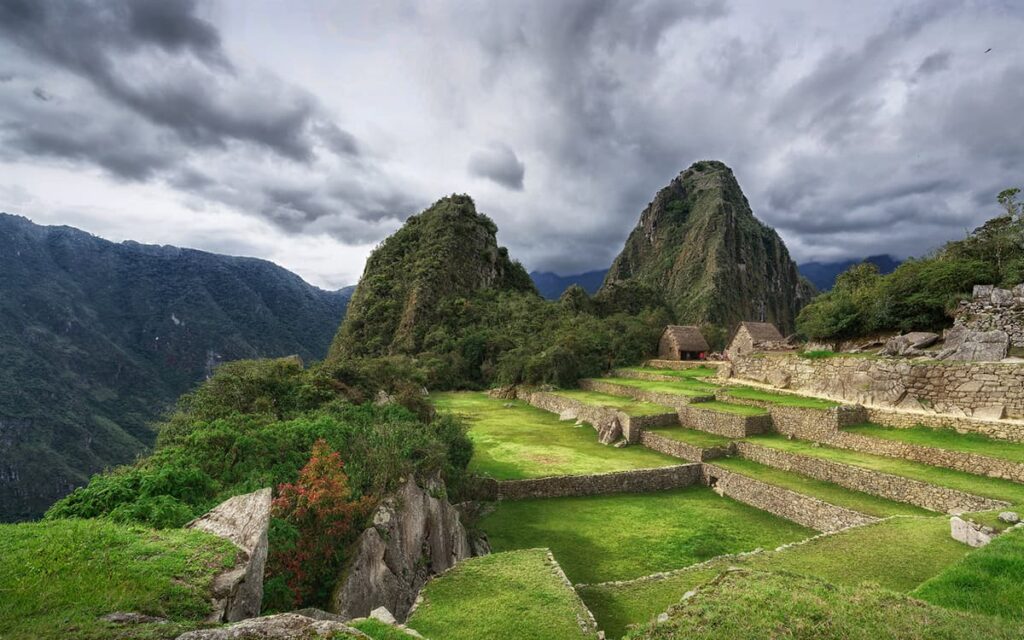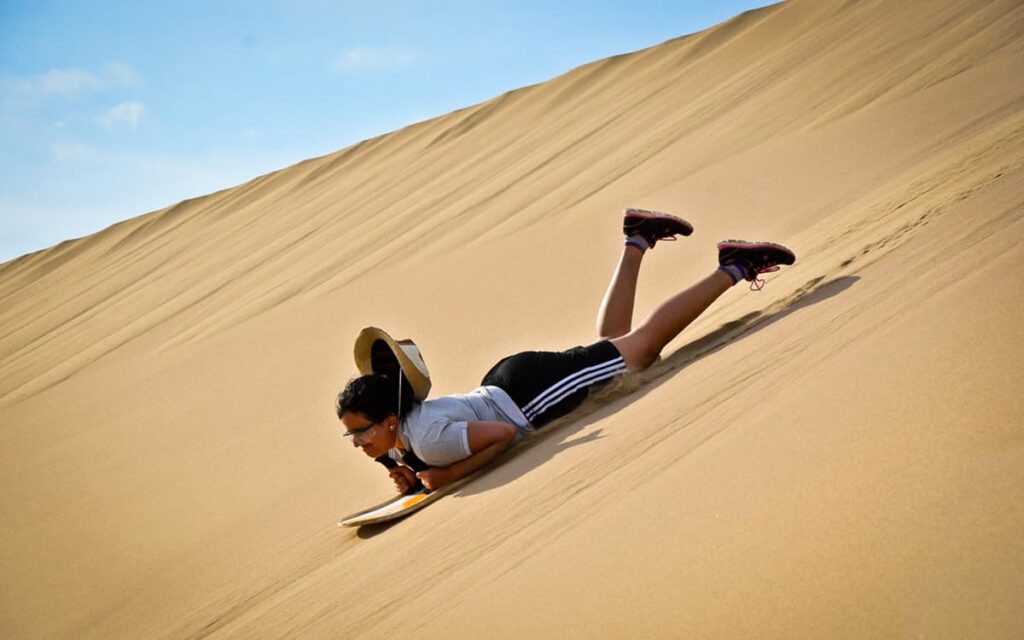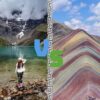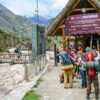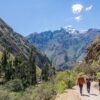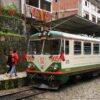The extensive Peruvian jungle, crossed by the mighty Amazon River, can be divided into two very different areas: the high jungle or mountain browbone (over 700 meters above sea level) which has a subtropical and temperate climate, with abundant rainfall (around 3,000 mm per year) between November and March and sunny days between April and October; and the low jungle (below 700 masl) whose summer occurs between the months of April and October and is an ideal time for tourism, with sunny days and high temperatures, often above 35 ° C.
Between the months of April and October the rivers decrease their flow and the roads are easily passable. The rainy season, on the other hand, between November and March, is characterized by frequent downpours (at least one a day) that can cause damage to land access roads. The humidity in the jungle is very high throughout the year.
In the southern region there are occasional «friajes» or «surazos», strong colds from the extreme south of the continent that occur between the months of May and August and in which the temperature usually drops to 8-12 ° C.
In the dry season the weather in the Amazon Rainforest is very warm day and night.
The rainy season raises the humidity, however the nights are cool.
Something special happens in the Iquitos area, there is no specific rainy or dry season, there is only variation in the water level. The hot and humid climate remains relatively constant throughout the year. The normal high temperature in the day is 31 ° C, the lowest at night is 17 ° C and the humidity can range between 80 to 90%.
Weather in the Amazon Rainforest
The weather in the Amazon Rainforest is humid tropical climate, with temperatures conditioned by the altitude.
Eastern Yunga
In the humid yunga forests, the climate ranges from moderately temperate to tropical humid, with high rainfall, which can reach 6,000 mm per year. Temperatures range from an average 12ºC in the lower parts to 6ºC in the higher parts.
Amazon
The weather in the Amazon Rainforest is a relatively flat region with average temperatures of 22 to 27 ºC. Rainfall is abundant, exceeding 3,000 mm in the north of Peru, while in the south it reaches 1,500 to 2,100 mm.
It has a high relative humidity given the high evapotranspiration both by the plant mass and by the profuse hydrographic network.
The weather in the city of Iquitos
Iquitos is a wonderful city to visit at any time of the year. But the best time, without a doubt for many tourists, is between the beginning of June and the end of August.
If you are sensitive to high temperatures, surely you will not like visiting Iquitos much in the hottest months such as September, October and November. However, some people find these months a time that they can enjoy for the fewest number of tourists.
On average, the normal daytime temperature range in Amazon Rainforest is from 32 ° C (90 ° F) and down to 22 ° C at night. Nothing bad! The «summer» in Iquitos (November-May) is rainy, hot and humid. In May, the Amazon River rises to its highest point. The «winter» is totally different from what we know: sunny days, tropical climate and very pleasant with an average of 30 ° C. There is not much difference but generally there are days of high humidity in which the heat is felt even more and this means less amount of rain.
The city of Iquitos has micro-climates, which means that rain can be present in one area of ??the city and sunlight in another. Sometimes the hot air does not dissipate so easily so it can be hotter in the city, a reason to escape to the middle of the Amazon River jungle, so that the trees can make the heat feel less and feel cool. and nature.
You can be sure that the weather in Iquitos is one of the most pleasant and cool despite the high temperatures. But why don’t you come and feel it yourself?
Precipitation Range in Amazon Rainforest
January:
- Precipitation (mm): 255
- Days: 17
February:
- Precipitation (mm): 275
- Days: 18
March:
- Precipitation (mm): 350
- Days: 20
April:
- Precipitation (mm): 305
- Days: 19
May:
- Precipitation (mm): 270
- Days: 18
June:
- Precipitation (mm): 200
- Days: 15
July:
- Precipitation (mm): 165
- Days: 14
August:
- Precipitation (mm): 155
- Days: 12
September:
- Precipitation (mm): 190
- Days: 14
October:
- Precipitation (mm): 215
- Days: 16
November:
- Precipitation (mm): 245
- Days: 16
December:
- Precipitation (mm): 255
- Days: 16
Temperatures in this northern part of the Amazon are permanently high throughout the year.
Temperature Range in Amazon Rainforest
January:
- Minimum Temperature (° C): 22
- Maximum Temperature (° C): 31
February:
- Minimum Temperature (° C): 22
- Maximum Temperature (° C): 32
March:
- Minimum Temperature (° C): 22
- Maximum Temperature (° C): 31
April:
- Minimum Temperature (° C): 22
- Maximum Temperature (° C): 31
May:
- Minimum Temperature (° C): 22
- Maximum Temperature (° C): 30
June:
- Minimum Temperature (° C): 22
- Maximum Temperature (° C): 30
July:
- Minimum Temperature (° C): 21
- Maximum Temperature (° C): 30
August:
- Minimum Temperature (° C): 21
- Maximum Temperature (° C): 31
September:
- Minimum Temperature (° C): 21
- Maximum Temperature (° C): 32
October:
- Minimum Temperature (° C): 22
- Maximum Temperature (° C): 32
November:
- Minimum Temperature (° C): 22
- Maximum Temperature (° C): 32
December:
- Minimum Temperature (° C): 22
- Maximum Temperature (° C): 31
Tourist places
The Peruvian jungle has numerous areas of great tourist value, especially for the beauty of its landscapes. On the other hand, in many cases the attraction of natural landscapes is combined with the possibility of visiting archaeological sites.
In many areas of the jungle there are remains of ancient Inca cities and other pre-Columbian cultures. However, the main limitation in most cases are the communication channels to access them.
Touring Peru is discovering endless mysterious places, with hidden stories in corners that you may have never seen before stepping on this country. We recommend you to visit another impressive destinations in Cusco like the tour to rainbow mountain peru or the humantay lake tour from cusco, which only takes one day. But if you are gonna to stay more days in Perú, other archaeological places you can know will be the choquequirao trek peru, the salkantay trek to machu picchu, and the classic inca trail 4 days 3 nights.
Tarapoto
This city is located in the province of San Martín and has numerous tourist attractions, with magnificent landscapes of the Amazon rainforest. This is one of the most important tourist centers in the Peruvian Amazon region.
In its vicinity there are numerous waterfalls, such as the Ahuashiyacu waterfalls, and lagoons such as the Sauce or Azul lagoon and the Lindo lake.
The Pacaya Samiria National Reserve
This reserve is located in the Amazon region in the department of Loreto with an area of ??2,080,000 hectares. It is particularly important for the preservation of the flooded tropical forest or varzea.
Within the reserve there are several tourist areas, the most accessible being those near the city of Iquitos. In addition, this city is itself a tourist attraction that is highly appreciated by visitors.
The Island of the Monkeys in Iquitos
It is a rescue center for Amazonian primates subjected to illegal trade that was founded by private initiative. It was founded in 1997 and occupies 450 hectares where 7 species of monkeys can be observed in full freedom in their natural environment.
Manu national park
This national park located in the southeast of Peru, constitutes a Biosphere Reserve with 1,909,800 hectares. Territorially, it covers part of the department of Cuzco and part of the department of Madre de Dios, with a maximum altitude of 3,800 meters above sea level in the Apu Kañajhuay mountain.
In this park the tourist has the opportunity to know the tropical forest in the Amazon-Andean transition zone. However, tourist access is only allowed to part of the park, the Manu reserved area, in the lower basin of the river.
When to go
It is not possible to find a single period in which all of Peru offers its best appearance, because the best period in the Andean areas and in the Amazon is the southern winter (June to August), while along the east coast period is cool, cloudy and foggy. To have some heat and especially sun, along the coast and in Lima, the best period is from December to April; for bathing in particular the best period is from January to March.
What to pack
In winter (June-August): for the coast and Lima, mid-season clothing, a sweatshirt or sweater and a jacket. For the Amazon, light clothing, made of natural fiber, perhaps with long sleeves to defend against mosquitoes, and a sweatshirt for the night; in the southern part (see Puerto Maldonado) and also in the mountainous part of the Amazon, you can wear a sweatshirt or jacket for the night. For the Andes, in places at around 2,500 / 4,000 meters, such as Cuzco, Arequipa and Lake Titicaca, mid-season clothing for the day, but also a sweater, heavy anorak and a hat for the night; sun hat, sunscreen, walking shoes. For the highest peaks, down jacket, scarf, gloves, snow shoes.
In summer (December-February): for the coast and Lima, light clothing, a sweatshirt for the night, an umbrella or a light raincoat north of Lima during the years of the Child, a light jacket for the southernmost part of the coast. For the Amazon, light clothing, made of natural fiber, perhaps with long sleeves to defend against mosquitoes; a sweatshirt or light jacket for the night in the mountainous part of the Amazon. For the Andes, in places around 2,500 / 4,000 meters, such as Cuzco, Arequipa and Lake Titicaca, mid-season or even light clothing for the day, but also a sweater, anorak and a hat for the night; sun hat, sunscreen, umbrella or raincoat, walking shoes.
For the highest peaks, down jacket, scarf, gloves, snow shoes.

